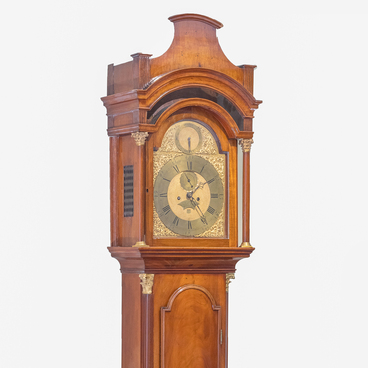At the turn of the 20th century, Petrozavodsk, even though it was called the provincial center, continued to be a small town. The lifestyle of most townspeople was more rural than urban: Petrozavodsk had many wooden houses surrounded by outbuildings, vegetable gardens, baths, and wells. Life in the city was peaceful and quiet. In the fall and winter, the wickets and gates of the high fences that separated the houses from each other were locked after nine o’clock in the evening.
The city woke to life in the summer, after the opening of lake navigation. Townspeople of all ages and wealth went to the public pier to see off passenger steamers that were leaving for St. Petersburg. In everyday life, the small “high society” of Petrozavodsk tried to meet the requirements of the capital. In the living rooms of the officials' apartments, one could see the elegant furniture of the “Tonet” company, card tables, and the latest technical innovations: for example, music boxes.
A music box is a kind of a sound-reproducing musical instrument. A special mechanism was placed inside a small box, which was responsible for the melody. The first device of this kind was made in Geneva by the watchmaker Antoine Favre in 1796. Favre’s mechanisms, which he began to build into clocks or perfume bottles, were called musical snuff boxes.
On the lid inside the music box, which is housed in the National Museum of the Republic of Karelia, three birds are depicted sitting on branches. And on the front side, there is a metal plate with the inscription “Store of gramophones N. A. Kolchin, 31, Cadet Line, St. Petersburg.”
Music boxes gained immense popularity from the 18th to the early 20th centuries and there were many types of them: from simple trinkets to complicated mechanisms of sophisticated design. Artisans carefully selected the outer case of the instrument: the material of the body was made thin, providing vibration, and at the same time strong to support the weight of the musical mechanism. The size of the music box greatly influenced the sound: the larger the box was, the louder and more pleasant the music sounded.
The city woke to life in the summer, after the opening of lake navigation. Townspeople of all ages and wealth went to the public pier to see off passenger steamers that were leaving for St. Petersburg. In everyday life, the small “high society” of Petrozavodsk tried to meet the requirements of the capital. In the living rooms of the officials' apartments, one could see the elegant furniture of the “Tonet” company, card tables, and the latest technical innovations: for example, music boxes.
A music box is a kind of a sound-reproducing musical instrument. A special mechanism was placed inside a small box, which was responsible for the melody. The first device of this kind was made in Geneva by the watchmaker Antoine Favre in 1796. Favre’s mechanisms, which he began to build into clocks or perfume bottles, were called musical snuff boxes.
On the lid inside the music box, which is housed in the National Museum of the Republic of Karelia, three birds are depicted sitting on branches. And on the front side, there is a metal plate with the inscription “Store of gramophones N. A. Kolchin, 31, Cadet Line, St. Petersburg.”
Music boxes gained immense popularity from the 18th to the early 20th centuries and there were many types of them: from simple trinkets to complicated mechanisms of sophisticated design. Artisans carefully selected the outer case of the instrument: the material of the body was made thin, providing vibration, and at the same time strong to support the weight of the musical mechanism. The size of the music box greatly influenced the sound: the larger the box was, the louder and more pleasant the music sounded.



